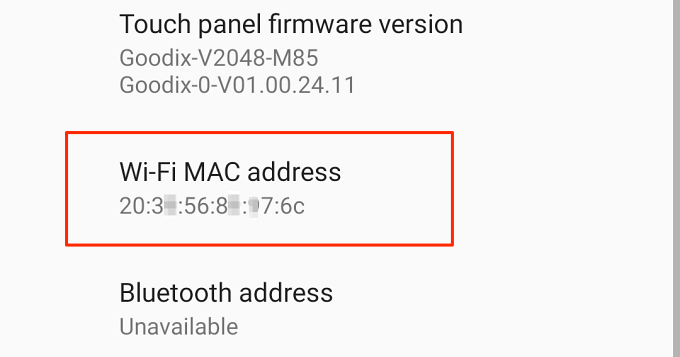
At the Terminal Prompt, type ifconfig and press Enter.Locate and open Terminal from Applications->Utilities->Terminal.To get your computer's Wired or Wireless MAC address from the Terminal Screen: Save and Print the document and keep it with your important papers.Right-click and choose Paste to put the information into the document.Open up Notepad (Start->All Programs->Accessories->Notepad).
 Press Enter to copy the text from the Command Prompt screen. Right-click anywhere in the command prompt window and choose Select All. Write down or copy/paste the addresses for future reference.Ĭopy this information from the command prompt screen into a notepad document:. The wireless physical address will be listed under Ethernet adapter Wireless Network Connection. The wired physical address will be listed under Ethernet adapter Local Area Connection. To find the Physical Address for your connection:. Press Enter to list the connection information for your wired and/or wireless connections. *At the Command Prompt, type *ipconfig /all Note: Be sure to put a space between ipconfig and /all!. Type command in the search box (Start->Run for Windows XP) and press Enter. Get your computer's Wired or Wireless MAC address from the Command Prompt Screen: Your device therefore is likely to have two MAC addresses. The address is assigned by the manufacturer, for Ethernet and Wi-Fi cards. If you do not see your operating system listed, refer to your device’s user manual or product support website.A Media Access Control (MAC) address is a unique numeric identifier used to distinguish a device from others on a network. If this does not work, refer to your device’s user manual. In most cases, you can follow this procedure to locate your MAC address:Ī WiFi Address or WiFi MAC Address displays. This is your device’s MAC address.Ī Wi-Fi Address displays. Select Apple Icon > System Preferences > Network > Advanced.Ī WiFi Address or Airport Address displays.
Press Enter to copy the text from the Command Prompt screen. Right-click anywhere in the command prompt window and choose Select All. Write down or copy/paste the addresses for future reference.Ĭopy this information from the command prompt screen into a notepad document:. The wireless physical address will be listed under Ethernet adapter Wireless Network Connection. The wired physical address will be listed under Ethernet adapter Local Area Connection. To find the Physical Address for your connection:. Press Enter to list the connection information for your wired and/or wireless connections. *At the Command Prompt, type *ipconfig /all Note: Be sure to put a space between ipconfig and /all!. Type command in the search box (Start->Run for Windows XP) and press Enter. Get your computer's Wired or Wireless MAC address from the Command Prompt Screen: Your device therefore is likely to have two MAC addresses. The address is assigned by the manufacturer, for Ethernet and Wi-Fi cards. If you do not see your operating system listed, refer to your device’s user manual or product support website.A Media Access Control (MAC) address is a unique numeric identifier used to distinguish a device from others on a network. If this does not work, refer to your device’s user manual. In most cases, you can follow this procedure to locate your MAC address:Ī WiFi Address or WiFi MAC Address displays. This is your device’s MAC address.Ī Wi-Fi Address displays. Select Apple Icon > System Preferences > Network > Advanced.Ī WiFi Address or Airport Address displays. 
This is your computer’s Ethernet MAC address.

Under Ethernet adapter Wireless Network Connection, a Physical Address displays. In the command prompt, type ipconfig /all.The physical address is your device’s MAC address. Click Windows Start or press the Windows key.Ī physical address displays for each adapter.You can block or allow service to a specific device if you know its MAC address.Ĭlick the link for your operating system: If your computer has multiple network adapters (for example, an Ethernet adapter and a wireless adapter), each adapter has its own MAC address. Follow the steps for the operating system that you use.Įxample of a MAC address: 00:00:00:a1:2b:ccĮvery device connected to your home network has a unique MAC address. Follow these instructions to find your computer or mobile device’s media access control address (MAC address).







 0 kommentar(er)
0 kommentar(er)
